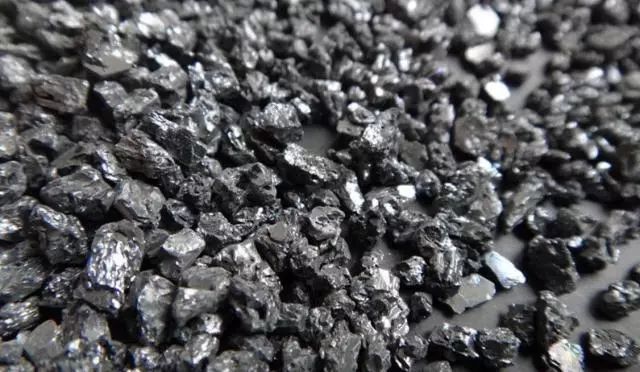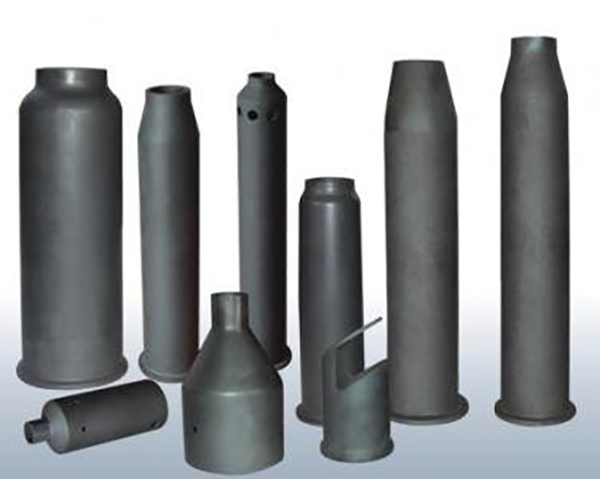Because of its stable chemical properties, high thermal conductivity, small thermal expansion coefficient, and excellent abrasion resistance, silicon carbide has many other uses besides abrasives, such as coating silicon carbide powder on a turbine wheel or cylinder block by a unique process. The inner wall can improve its abrasion resistance and extend its service life by 1 to 2 times. The high-grade refractory material used is made of heat-resistant shock, small size, lightweight, high strength, and good energy-saving effect. Low-grade silicon carbide (containing about 85% of SiC) is an excellent deoxidizer. It can accelerate the speed of steelmaking, facilitate the control of chemical composition, and improve the quality of steel. In addition, silicon carbide is also widely used to make silicon carbide rods for electric heating elements.
The hardness of silicon carbide is very high, Mohs hardness is 9.5, second only to the hardest diamond in the world (10), it has excellent thermal conductivity, is a semiconductor, and can resist oxidation at high temperatures. Pure silicon carbide is colorless, while industrially produced brown to black are due to iron-containing impurities. The rainbow-like lustre on the crystal is due to the protective silica layer provided on the surface.
Physical properties of silicon carbide
Silicon carbide was a carbide that was accidentally found in the laboratory by American Acheson in the fused diamond experiment in 1891. At that time, it was mistaken for a mixture of diamonds, so it was named emery. Acheson developed it in 1893. The modern smelting method of silicon carbide, which is often referred to as the Acheson furnace, is still in use today. A resistance furnace with carbonaceous material as the core body is heated to produce a silicon carbide by heating a mixture of quartz SIO2 and carbon.

The material structure of silicon carbide
Pure silicon carbide is colorless and transparent crystal. Industrial silicon carbide is light yellow, green, blue, or even black due to the different types and contents of impurities. Transparency varies with its purity. Silicon carbide crystal structure is divided into hexagonal or rhombohedral α-SiC and cubic β-SiC (called cubic silicon carbide). α-SiC constitutes many different variants due to different stacking sequences of carbon and silicon atoms in its crystal structure, and more than 70 species have been found. β-SiC turns into α-SiC at 2100 ° C or higher. The automated manufacturing method of silicon carbide is to use quartz sand and petroleum coke in an electric resistance furnace. The refined silicon carbide block is crushed, washed with acid and alkali, magnetically separated and sieved or water-separated to make products of various sizes.

The manufacturing process of silicon carbide
Due to its low natural content, silicon carbide is mostly human-made. The common method is to mix quartz sand with coke, use the silica and petroleum coke in it, add salt and wood chips, put it in an electric furnace, and heat it to a high temperature of about 2000 ° C. After various chemical processes, silicon carbide fine powder is obtained.
Silicon carbide (SiC) is an essential abrasive because of its high hardness, but its application range exceeds that of ordinary abrasives. For example, its high-temperature resistance and thermal conductivity make it one of the preferred kiln furniture materials for tunnel kiln or shuttle kiln, and its electrical conductivity makes it an essential electric heating element. To prepare SiC products, we must first prepare SiC smelting blocks [or SiC pellets, which contain C and are super hard, so SiC pellets were once called: silicon carbide. But beware: it is different from natural emery (also known as garnet). In industrial production, SiC smelting blocks usually use quartz, petroleum coke, etc. as raw materials, recycled auxiliary materials, and spent materials. After grinding and other processes, they are formulated into furnaces with reasonable proportions and appropriate particle sizes. Wood chips, the green silicon carbide is prepared by adding a proper amount of salt) made at high temperature. The thermal equipment for making SiC smelting blocks at high temperature is an individual silicon carbide electric furnace. Its structure consists of the furnace bottom, end walls with electrodes inlaid on the inside, removable sidewalls, and the furnace core (full name: the electric heating centre of the furnace, generally The graphite powder or petroleum coke is installed in the centre of the charge according to a certain shape and size, which is generally circular or rectangular. Its two ends are connected to the electrode). The firing method used in the electric furnace is commonly known as buried powder firing. As soon as it is energized, the heating starts. The temperature of the furnace core is about 2500 ° C or even higher (2600-2700 ° C). When the charge reaches 1450 ° C, SiC is synthesized (but SiC is mainly formed at ≥1800 ° C) and co is released. However, SiC will decompose at ≥ 2600 ° C, but the decomposed si will form SiC with C in the charge. Each group of electric furnaces is equipped with a set of transformers but only supplies a single electric heater during production to adjust the voltage according to the characteristics of the electrical load to maintain constant power. The high-power electric heater is heated for about 24 hours. After a period of cooling, the side walls can be removed, and then the charge is gradually removed.
Uses of silicon carbide
It can be used as a deoxidizer for steelmaking and improver of cast-iron structure. It can also be used as raw material for making silicon tetrachloride. It is the primary raw material of silicone resin industry. Silicon carbide deoxidizer is a new type of strong composite deoxidizer, which replaces traditional silicon powder carbon powder for deoxidation. Compared with the original process, the physical and chemical properties are more stable, the deoxidation effect is better, the deoxidation time is shortened, energy is saved. The efficiency of steelmaking, improving the quality of steel, reducing the consumption of raw and auxiliary materials, reducing environmental pollution, improving working conditions, and improving the overall economic benefits of electric furnaces are of great value.
TRUNNANO (Luoyang Trunnano Tech Co., Ltd ) is a professional Silicon carbide manufacturer with over 12 years experience in chemical products research and development. If you are looking for high quality Silicon carbide, please feel free to contact us and send an inquiry. 
